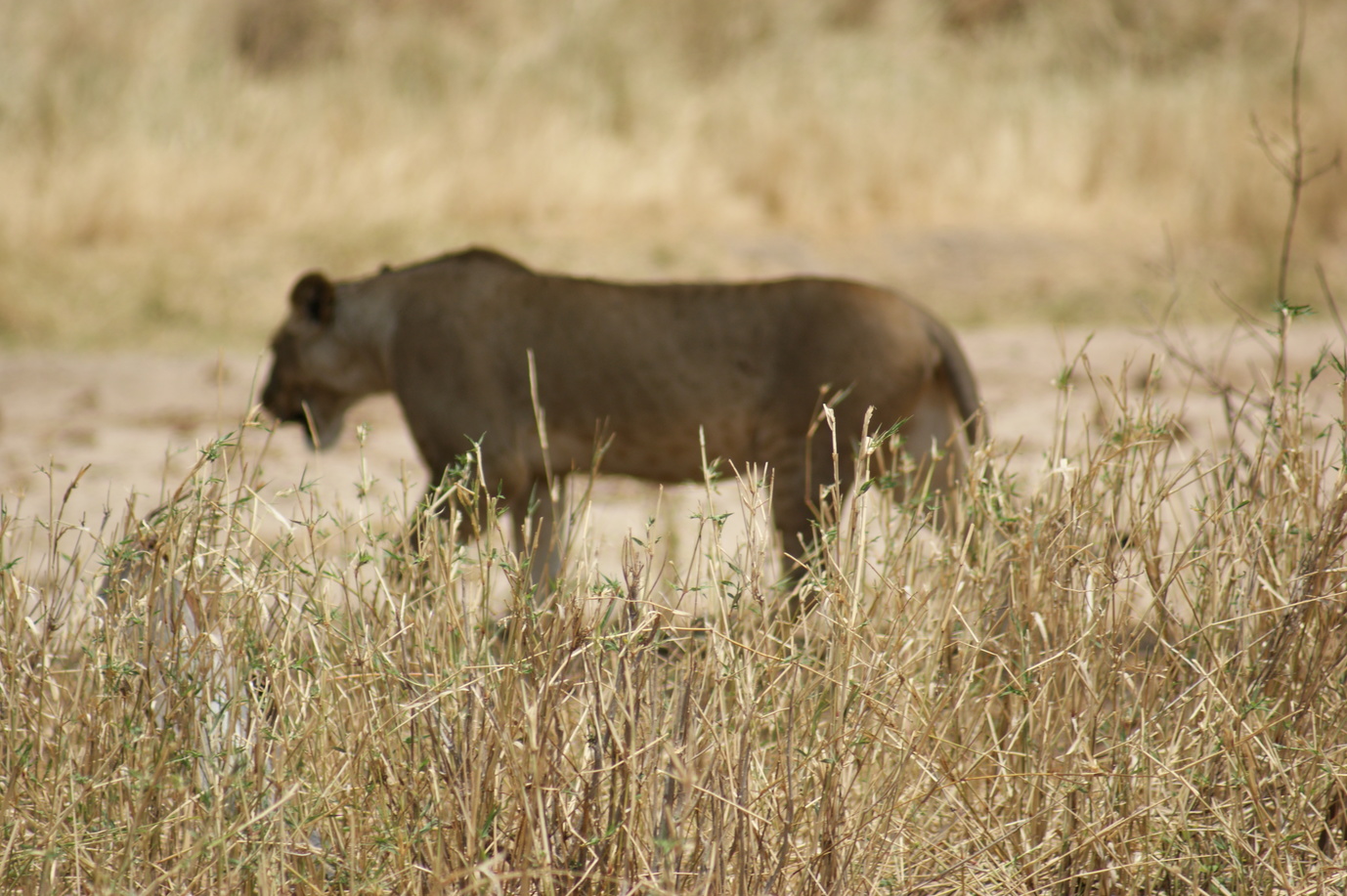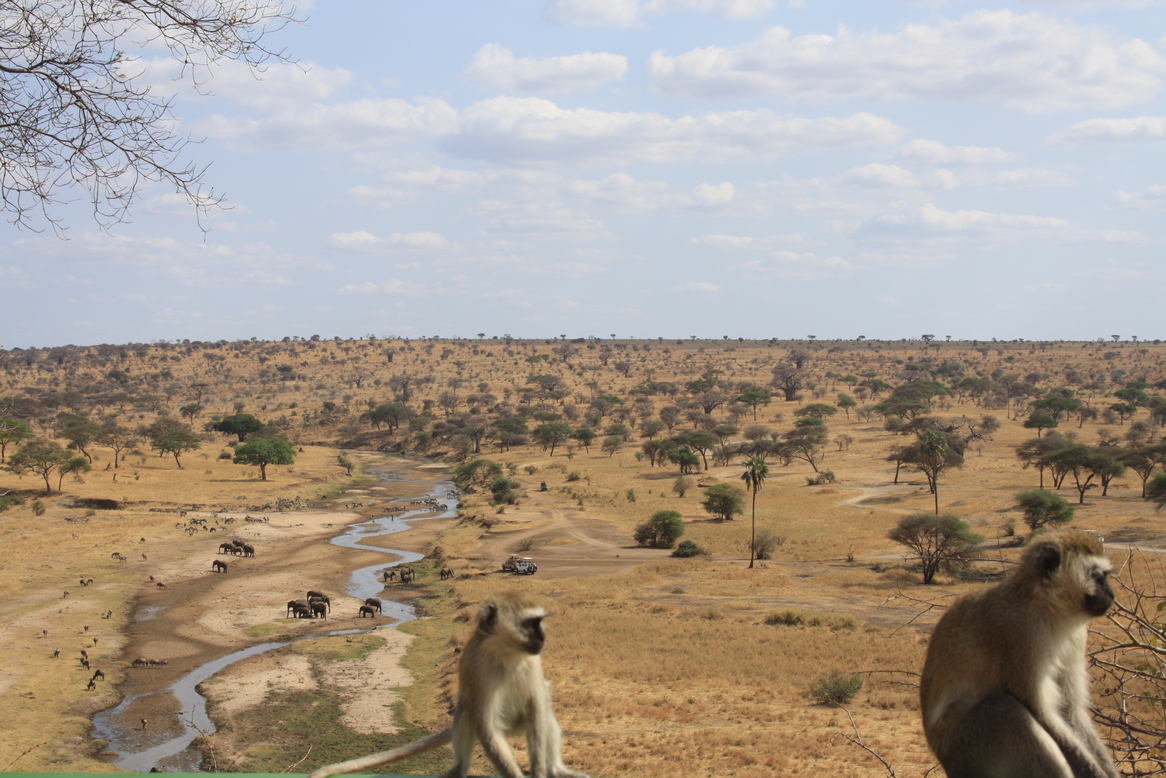 |
| Maasai performance |
Although the Maasai have long rejected modernization, they are now quick to capitalize on the high levels of tourism, a seemingly strange contradiction between their fight for their pastoral and self sufficient lifestyle. One can't help but admire a culture for resisting the urge to be modernized with permanent houses, schools, the English language, and other culture brought from colonization, especially in light of what appears to be a unique culture. Still, as with most indigenous cultures around the world, there is a tendency to romanticize the culture, especially while viewing it through the lens of a short village visit between game drives.
My first interaction with a Maasai was through our bird club. As most of the members of our bird club are aspiring tourist guides, Lukas, our friend, was no different. He had grown up in the traditional Maasai lifestyle, migrated to a nearby village for work and was employed by an NGO as a security guard. For some reason, the Maasai's most common line of work is as a security guard, so Lukas's story is a common one. There he met a Dutch woman, they fell in love, and she sent him to college where he completed a degree in wildlife guiding. Again, not a totally uncommon line of events for this area. Now, Lukas joined our bird club and we thought he was going to be an awesome birder due to the mystique that surrounds the Maasai and their interactions with wildlife. Unfortunately, he was quite below average and even seemed to be a bit bored of birding when we were out.
Over the course of our trips I began to ask Lukas about Maasai life. I thought I was tactful in my inquiries about his culture and he was very open to sharing his experience. He told me that the earliest he went out to tend his familiy's cows alone was when he was eight years old. He spoke in depth about how much he loved to be alone and how easy it was for him to "cool his mind".
Later that week he called Ana and I and said he wanted to meet. We didn't know why but we agreed and met him at a local restaurant. In our previous interactions he was wearing western clothes but this time he was in full Maasai garb. He presented us with a brochure highlighting a local Maasai village and the way he presented himself to us really turned me off. I had thought we were friends and at least I had thought I had explained my desire to stay away from "non-authentic" villages so the fact that he dressed up and brought us a generic brochure was disappointing. Still, he presented us with his "thesis" that he made for school which was about Maasai culture and animals. They were somewhat crude handwritten books but we borrowed them to learn more. Either way, it was a revealing interaction.
My second interaction with Maasai is through a non-profit that Ana and I provide with pro-bono consulting. The organization works to end the practice of female genital mutilation (FGM) among the Maasai, a mandatory coming of age practice for women. We assist them in writing proposals to gain funding and it is obviously a darker side of the culture than we are presented with in the village-tour brochures. I'll save the FGM for another post but needless to say, it gave us a new perspective on their culture, especially as it pertains to just how paternalistic their society is and how few rights women have.
So on our safari we knew the guide would suggest visiting a Maasai village. Ana and I were not thrilled at the prospect but her parents wanted to go. We paid $20 a person to view a village. We were told that we should take as many pictures as we want. I found this interesting since the Maasai had previously fought this practice claiming that it "takes their blood" yet apparently either they changed their beliefs or were content being compensated for it. There was one English speaking guide and he introduced us to the village and a group of men did a "welcome dance" with much less than $20 of enthusiasm. They even paused mid-dance when they thought another safari vehicle was coming but alas, it was just turning around.
We were then herded inside of their "village" and crafts lined the walls of the interior. We were told that the women made the crafts and the proceeds would go towards the women's group. The guide said to pick what we liked and we'd negotiate a price in the end. I was somewhat skeptical of the existence of a women's group knowing the culture of the Maasai though it's not unheard of in some villages that have worked with NGOs and other development organizations.
 |
| Outside of the village area. |
 |
| The tourists look on, obviously one is not very pleased. |
In the end Ana's family enjoyed the tour as it was a peak inside the culture of a group they had recently become familiar with. For us, it was a disappointing shallow interaction with a group that had successfully commodified themselves. I think cultural tours are an excellent way for local people to benefit from tourism but I was furious and disappointed that they manipulated tourists emotions regarding the women and the school to extract more money from tourists. I think a fair and accurate presentation of culture should be presented, or perhaps I think those who view these cultures in a brief moment of time should take the responsibility to learning more after they leave. However, I do understand that most people are on vacation and simply want a picture with a group of cute kids jumping in the air.
 |
| The "school". |
 |
| Performance. |
















































